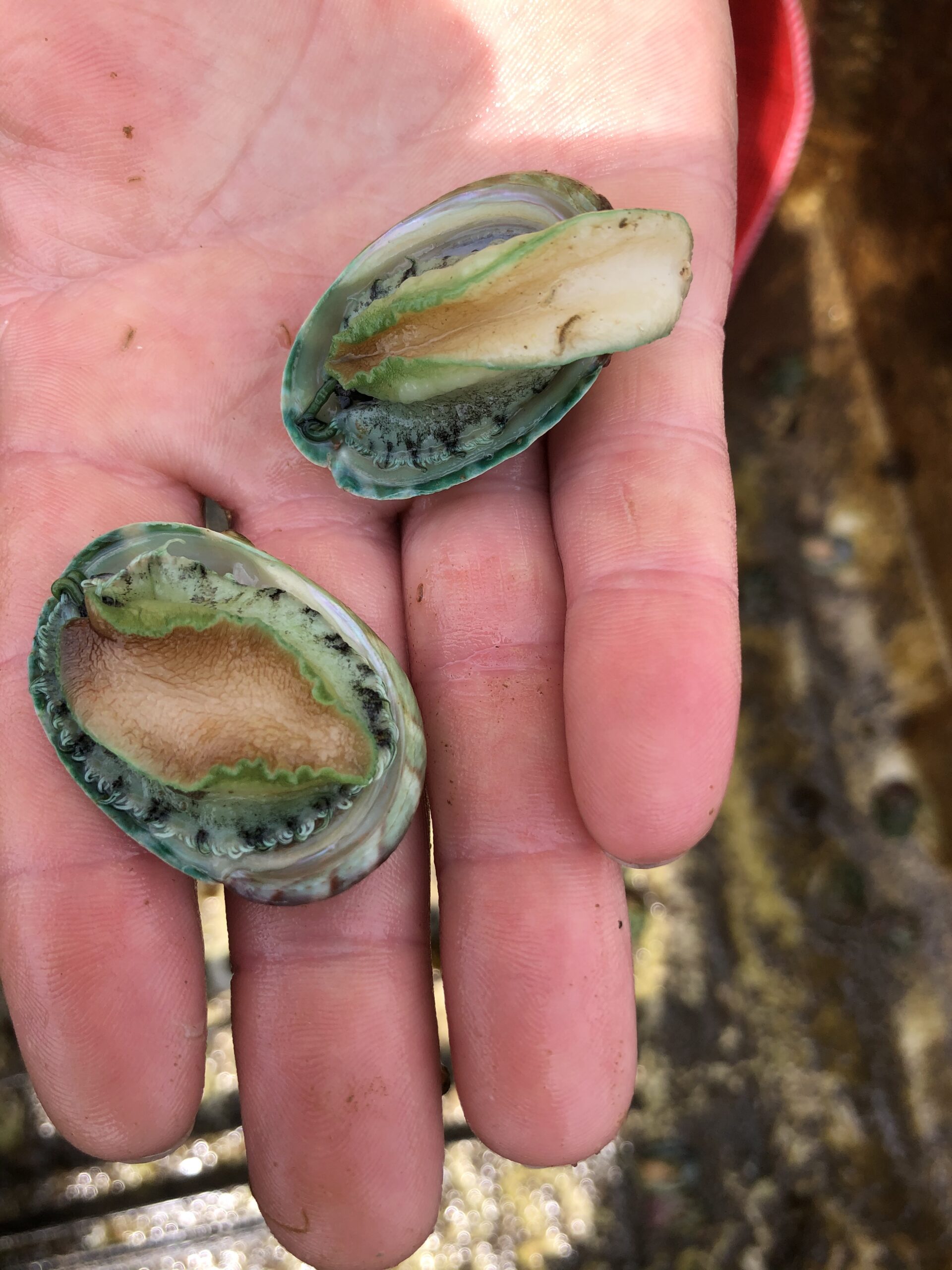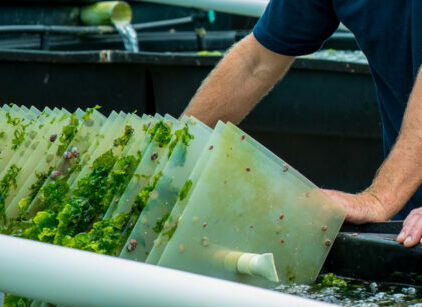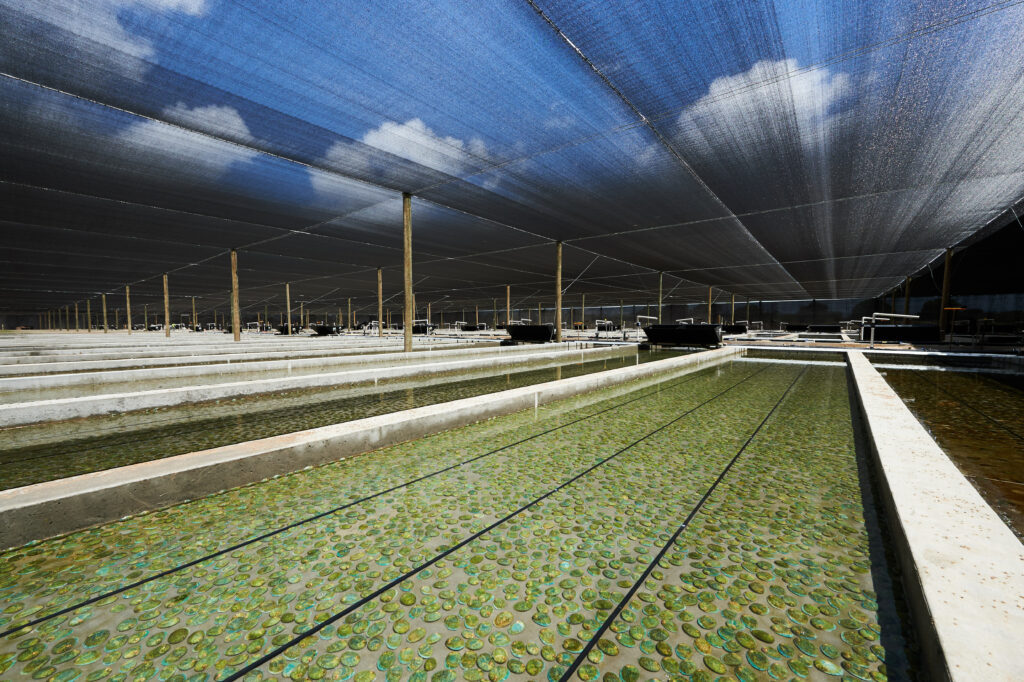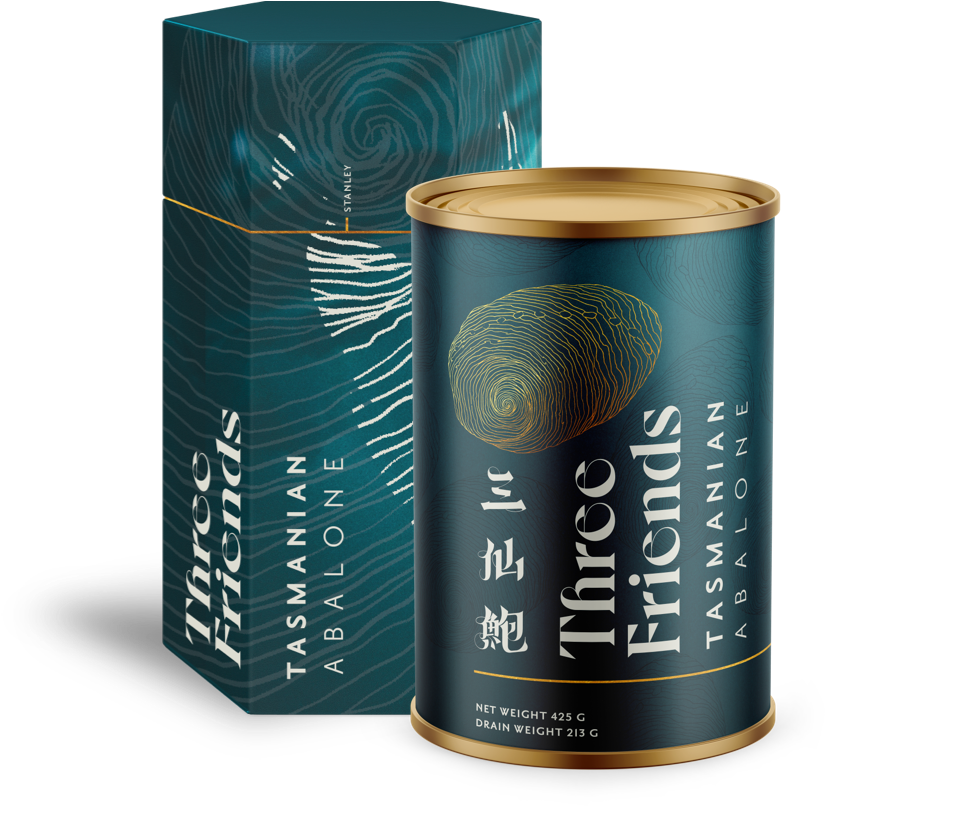Aquaculture supplies seafood to an increasing world population whilst safeguarding native fish stocks for generations to come. This is especially the case for abalone as most of the world’s wild abalone fisheries have collapsed, with many species facing extinction.
Australia is one of only a few countries that retains a viable abalone fishing industry and is the largest supplier of wild caught abalone in the world. In 2022 more than 95% of the world’s abalone supply was from aquaculture sources, with most abalone grown in China and South Korea.
The first attempts to commercially breed abalone in Australia were conducted in Tasmania and South Australia in the late 1980’s. The lack of availability of quality seaweeds, the natural diet of abalone was a major constraint to growth and a major driver for research and development of formulated feeds funded by the FRDC, (Fisheries Research and Development Corporation). Formulated diets consist mostly of cereal grains and pulses, with very small additions of fish meal for essential fatty acids.
Australian farm production expanded rapidly in the early 2000’s and has exceeded 1000T every year since 2018. AAGA projects that farm production will exceed 2000T by 2025.
Australian greenlip (Haliotis laevigata) and tiger abalone, a cross between greenlip and blacklip (Haliotis rubra) are highly regarded on the world market. Greenlip are the main species farmed in Western Australia and South Australia. Farm production is dominated by tigers in the cooler waters of Victoria and Tasmania. Each generation of tigers requires a cross between greenlips and blacklips.
Abalone are a coastal species adapted to living with strong currents and swells. They require especially high water quality, rich in oxygen and very low in pollutants and as such are an indicator species of high water quality. Frequently, abalone are found in quite dense aggregations where they are at once protected from extreme wave action and where drift algae collects. This characteristic makes abalone especially vulnerable to overfishing, but also amenable to culture at relatively high densities. The primary requirement of an abalone farm is to maintain a constant source of very clean and well aerated seawater.
Broodstock abalone have been selectively bred on farms for several generations to produce domesticated stocks that are well suited to the farm environment.


Farmers transfer ripe broodstock abalone to the hatchery and place them in tubs of seawater exposed to UV light and temperature fluctuations. This mimics stormy ocean conditions and triggers the abalone to spawn. Sperm and eggs are carefully mixed to ensure just enough sperm to fertilise the eggs. A single large female can produce millions of eggs. The eggs are only 0.3mm in diameter, but packed with yolk to sustain development of the larvae.

Click here to see abalone spawning and early life stages, courtesy Yumbah aquaculture, with permission.
The larval abalone will swim for about a week in hatchery tanks before being transferred to nurseries for settlement. In the nursery, the abalone attach to the substrates and lose their ability to swim. The larvae are cued to settle by Ulvella, a green algae species grown on the substrates. These substrates also support a community of microalgae, mostly diatoms which are the first feed for the juvenile abalone. The juveniles will soon exhaust the microalgae on the plates and be weaned to a formulated diet.

Grow-out is completed in shallow concrete tanks with formulated feeds, and may take between 2 and 4 years depending on growth rates and the market size of the abalone. Grow-out requires regular feeding and cleaning of tanks to supply adequate nutrition and hygiene. The density of the abalone is carefully managed by grading and thinning of tanks.

Abalone are harvested year round and farms may supply abalone as live, fresh, frozen, canned, retort vacuum packed or dried. Quality branded products are available, please see our member websites for details.



